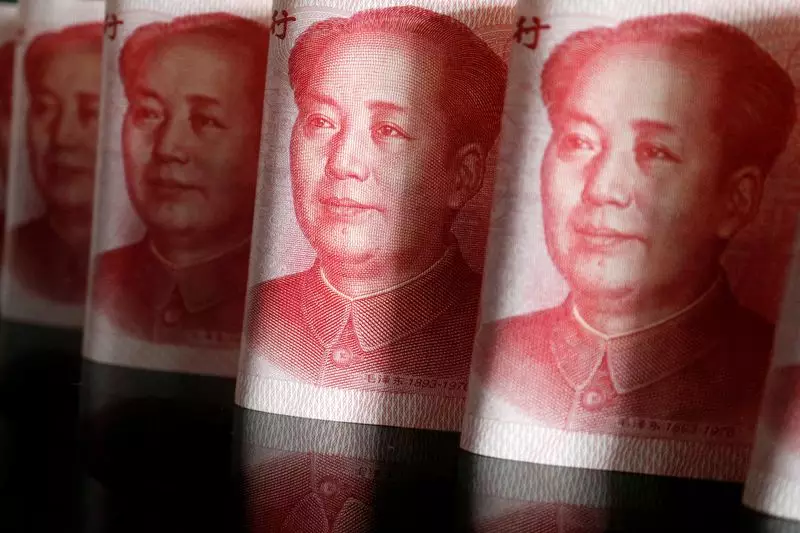In the face of formidable economic adversities, China is gearing up to implement a proactive fiscal strategy aimed at injecting vitality back into its economy. With an alarming rate of deflation and disconcerting growth metrics emerging in the post-pandemic landscape, Chinese authorities have responded by planning to issue special sovereign bonds amounting to an impressive 2 trillion yuan (roughly $284.43 billion) within the current year. This initiative aims not only to stimulate consumer spending but also to curb the spiraling economic decline exacerbated by a sluggish recovery from COVID-19.
According to insider reports, the Ministry of Finance (MOF) intends to deploy approximately 1 trillion yuan from these special bonds primarily to revitalize consumption. The intent is clear: to foster economic growth through increased household spending, which has lagged significantly—staying under 40% of the GDP, a stark contrast to the global average that exceeds 60%. This calculation signals an urgent need for immediate intervention to boost consumer demand.
The announcement highlights a multifaceted approach to expenditure, with a distinct emphasis on enhancing subsidies related to the trade-in and renewal of consumer goods. Such directives are particularly pertinent as the nation grapples with the hardships facing households and aims to create a conducive environment for consumer spending through tangible financial benefits.
In addition to stimulating consumption, the financial plan includes a proposal to provide a monthly allowance of around 800 yuan ($114) for families with two or more children. This social welfare component reflects the government’s commitment to bolstering family incomes and is part of a broader strategy to manage demographic shifts and enhance consumption potential among households.
Equally significant is the proposed allocation of another 1 trillion yuan in separate sovereign debt aimed at assisting local governments with their mounting debt pressures. It is estimated that local governments currently shoulder approximately $13 trillion in debt, derived largely from previous fiscal initiatives where spending focused heavily on infrastructural investment—returns for which are diminishing.
Amid these fiscal maneuvers, the Chinese government remains vigilant about meeting its ambitious 2024 growth target of approximately 5%. The expectations outlined in a recent Politburo meeting identify the critical role of both sovereign bonds and local government spending in ensuring essential fiscal input remains unwavering. This determination highlights the strategic importance of public investment as a countermeasure to the prevailing economic stagnation.
These measures come off the back of earlier monetary stimuli announced by the central bank, including significant liquidity injections and adjustments to borrowing costs aimed at fostering a climate of renewed economic trust. The interplay between fiscal expansion and monetary policy indicates a holistic approach to overcoming economic malaise.
Recognizing that small and medium-sized enterprises (SMEs) are pivotal to sustaining the economic recovery, authorities are considering phasing in increased support through employment subsidies and tax reductions to ease operational burdens. These measures are strategic, as SMEs represent a considerable portion of the workforce and play a critical role in driving domestic consumption and investment.
Morgan Stanley’s economists have reflected on these developments, suggesting that while the actions taken are not altogether radical, they signify a serious intention from the Beijing leadership to address deflationary trends seriously. The evolving fiscal landscape suggests that more comprehensive fiscal support focused on housing and social welfare initiatives is imminent.
China’s ambitious plans for a substantial issuance of special sovereign bonds underline the intricate balancing act it faces in navigating an economy beleaguered by deflation and faltering growth. The overarching aim of reviving both consumer spending and tackling local government debt reflects a strategic pivot toward stabilizing the economy in the short term while fostering sustainable growth in the long run.
As the world observes, these initiatives could herald a new phase in China’s economic policy framework—one that acknowledges the significance of direct support to households and local governments while maintaining momentum in consumption. Ultimately, how effectively these strategies are executed and their subsequent impact on consumer confidence and economic stability will be pivotal in determining China’s trajectory in the coming years.

